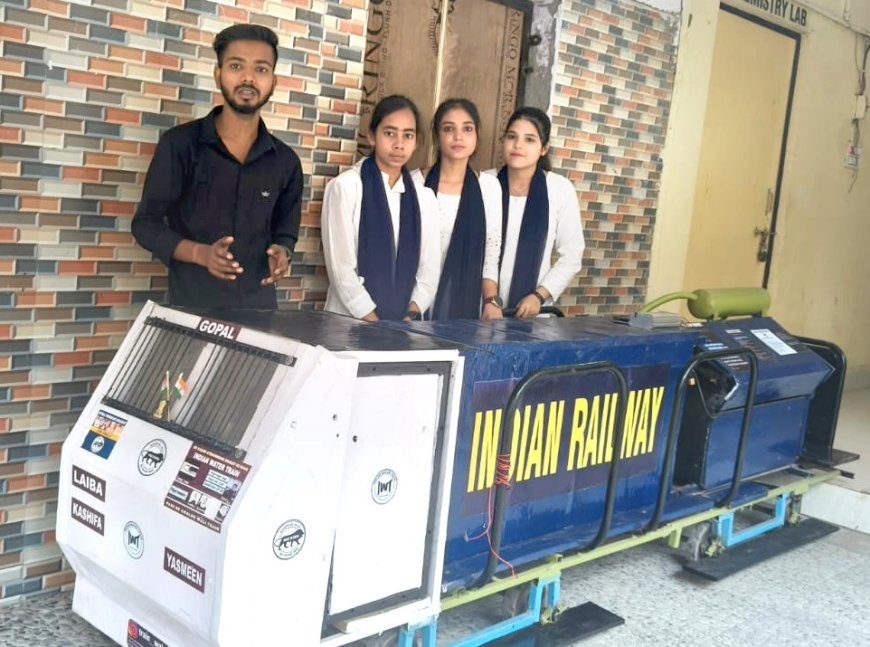Students from Islamia Girls' College and Gopal Build Water-Powered Train Prototype in India
Students and Gopal from Islamia Girls' College successfully develop a water-powered train prototype, promoting sustainability and self-reliance in India.

The innovative project, named the Indian Water Train (IWT), was successfully tested for the first time today. This miniature model of an Indian locomotive is powered by just 250 milliliters of water and can travel a distance of 50 meters. Despite its small scale, the test proved the potential of water-based propulsion systems for trains, highlighting an alternative and sustainable form of transportation. The project could be a game-changer in the field of green energy and eco-friendly transport.
Gopal, who has completed his B.Sc. and appeared for the UPSC examination, shared his inspiration for the project: "Rather than pursuing a conventional job, I wanted to create something that could contribute to the nation. Our goal is to give India a new direction with innovations that are both sustainable and self-reliant."
This significant milestone not only marks a leap in scientific innovation but also aligns with national campaigns like Make in India and Atmanirbhar Bharat. If scaled up, this technology could save the Indian government around 8,000 crores annually by reducing fuel consumption in the railway sector. The potential savings could be redirected to improving passenger services and reducing fare costs, thus benefiting the general public.
The team is optimistic about the future of their invention. They are in the process of applying for a patent for the IWT design, and once granted, they plan to scale the project to larger train models. In fact, the team believes that with further research and development, even large Indian Railway engines like the WAP-1 and WAP-2 could be powered by water-based systems in the future. Such advancements could revolutionize the Indian transport sector by reducing dependency on fossil fuels and significantly cutting down carbon emissions.
The IWT project is not just a testament to the ingenuity of the students and Gopal but also a significant step toward sustainable transport solutions in India. It showcases how innovation, even on a small scale, can lead to monumental changes in technology and environmental conservation.
As the team continues its research, they are hopeful that the success of their prototype will inspire other innovators in India to pursue sustainable and green technologies, contributing to a cleaner, greener future for the country.
In the coming months, the team plans to seek additional support from institutions and government agencies to further refine the technology and scale it to industrial levels. The potential of the Indian Water Train is limitless, and it could be the future of sustainable transport in India.
Staff Reporter
What's Your Reaction?




















































